Every iPhone release in chronological order: 2007-2024
This article contains affiliate links; if you click such a link and make a purchase, Digital Trends and Yahoo Inc. may earn a commission.
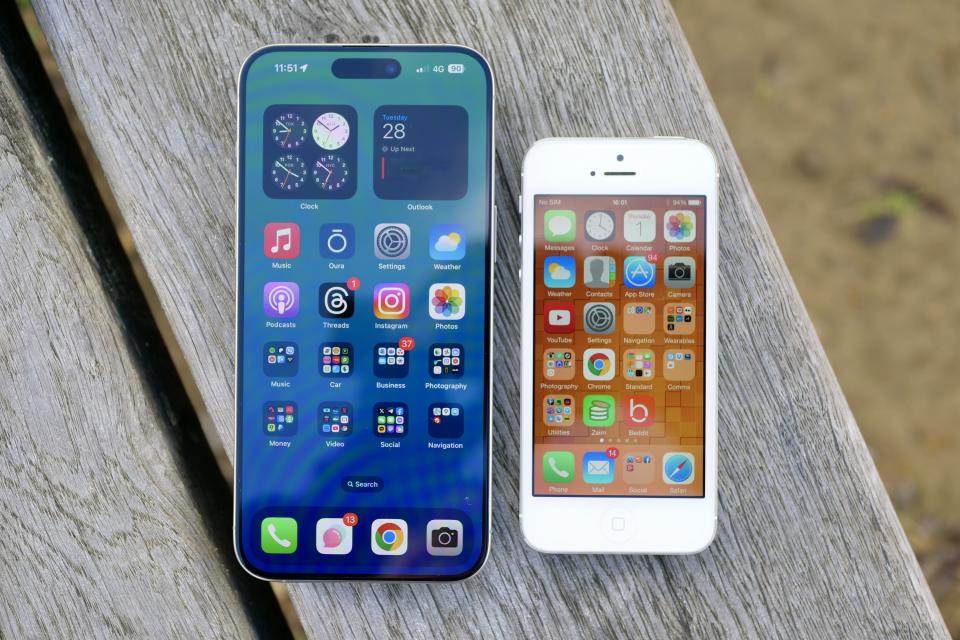
On January 9, 2007, Steve Jobs took the stage at Macworld and announced Apple’s next big product: the iPhone. Sales of the iPhone began on June 29, 2007, and it completely changed the world of mobile phones.
Now, in 2024, we’ve had over 16 years of iPhone releases. In just a few more years, it will be two decades of the iPhone, which is a little crazy to think about.
Let’s take a look back at every iPhone release in order, what made them special, and how we got to where we are today with the iPhone 15.
Every iPhone release in order
iPhone model | Release date |
iPhone | June 29, 2007 |
iPhone 3G | July 11, 2008 |
iPhone 3GS | June 19, 2009 |
iPhone 4 | June 24, 2010 |
iPhone 4S | October 14, 2011 |
iPhone 5 | September 21, 2012 |
iPhone 5S & 5C | September 20, 2013 |
iPhone 6 and 6 Plus | September 19, 2014 |
iPhone 6S and 6S Plus | September 25, 2015 |
iPhone SE | March 31, 2016 |
iPhone 7 and 7 Plus | September 16, 2016 |
iPhone 8 and 8 Plus | September 22, 2017 |
iPhone X | November 3, 2017 |
iPhone XS / XS Max | September 21, 2018 |
iPhone XR | October 26, 2018 |
iPhone 11 | September 20, 2019 |
iPhone SE 2 | April 24, 2020 |
iPhone 12 | October 23, 2020 |
iPhone 13 | September 24, 2021 |
iPhone SE 3 | March 18, 2022 |
iPhone 14 | September 16, 2022 |
iPhone 15 | September 22, 2023 |
iPhone (June 2007)
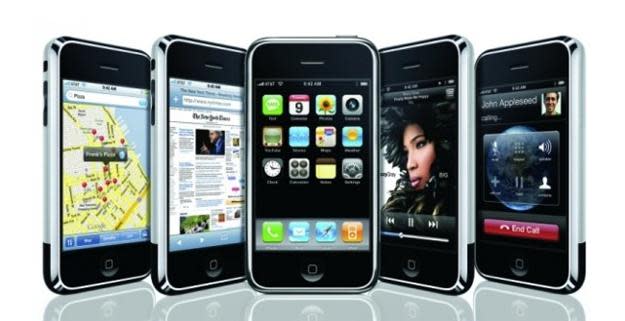
The original iPhone was the one that started it all and changed the mobile industry as we know it. Jobs said that the iPhone was three products: a widescreen iPod with touch controls, a revolutionary mobile phone, and a breakthrough internet communications device. An iPod, a phone, and an internet communicator. All in a single device. Do you get it?
At the time, the iPhone only had a 3.5-inch display, a 2-megapixel camera, and maxed-out storage of 16GB with only 128MB of RAM. You couldn’t copy and paste text, there was no MMS support, and you only had web apps, not native third-party apps. Plus, the iPhone was exclusive to AT&T (formerly Cingular) at this time, so if you wanted an iPhone, it had to be with only that carrier.
The original iPhone is lacking by today’s standards, but back then, it was revolutionary. Most other cell phones still had physical keyboards and keypads. Touchscreens were nowhere near as popular back in the day. Some tech CEOs, such as Steve Balmer, mocked Apple for creating the iPhone and didn’t think it would succeed. Well, the joke’s on them.
iPhone 3G (July 2008)
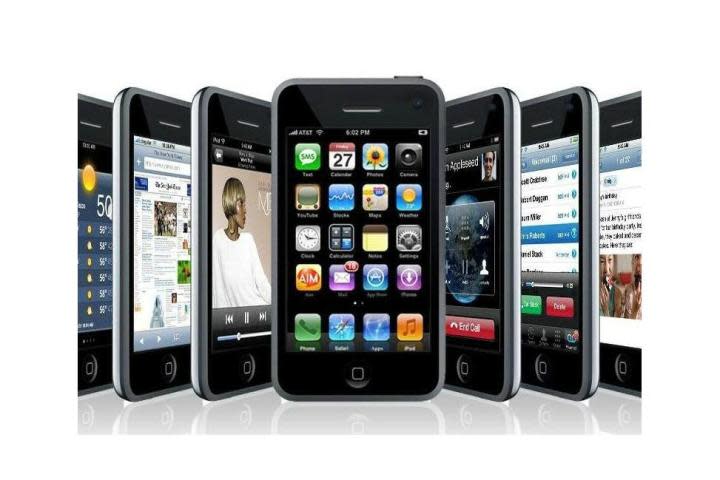
In July 2008, Apple followed up the original iPhone with the iPhone 3G. Similar to its predecessor, it had a 3.5-inch display, 2MP camera, 128MB of RAM, and up to 16GB of storage.
But as the name suggests, this version of the iPhone added 3G connectivity (the original iPhone only supported Edge speeds) and introduced the App Store, where users could download native apps from third-party developers.
Though these were pretty iterative additions by today’s standards, the launch of the App Store was actually huge. This began the whole “there’s an app for that” era and changed how all of us use our iPhones.
iPhone 3GS (June 2009)
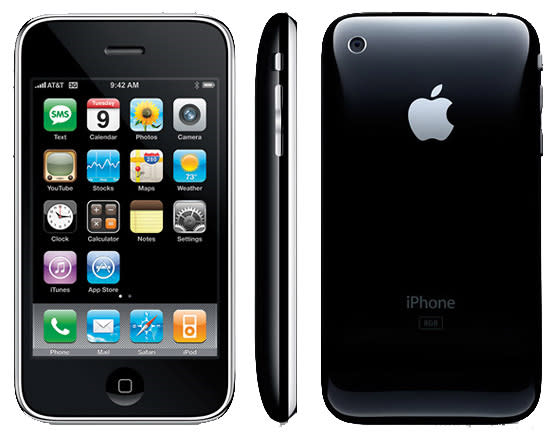
When Apple introduced the App Store in 2008, it changed how people use their iPhones. The old maximum storage of 16GB just wasn’t going to cut it anymore, so Apple increased the specs on the iPhone 3GS, which came out in June 2009.
The iPhone 3GS increased the storage to 32GB, and the RAM went up to 256MB. This doubled the storage and RAM of the original iPhone and even the iPhone 3G to make room for all of the cool apps you could now download from the App Store.
Not only did the iPhone 3GS get more internal storage and RAM, but it even improved the camera. Apple upgraded the camera to a 3MP autofocus camera, which resulted in better-looking photos than its predecessors. There was also a new built-in digital compass and even the introduction of new accessibility features like VoiceOver.
iPhone 4 (June 2010)
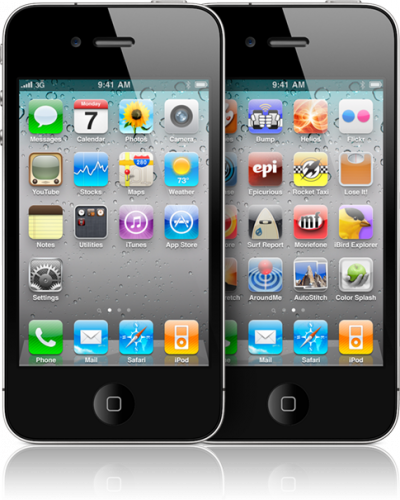
The iPhone 4 was a monumental step for the future of the iPhone. Though it retained the same 3.5-inch display as before, Apple upgraded the screen to a Retina display, which had a whopping 326 pixels per inch (ppi) density. At this high resolution, the human eye is unable to distinguish individual pixels on the screen. It was a drastic upgrade from the previous iterations of the iPhone and set the stage for Apple to add Retina displays to all of its other products eventually.
But that wasn’t the only major feature of the iPhone 4. Apple also added a front-facing camera for the first time, making it possible to have video calls on a mobile device. It also made selfies a thing. The rear camera got an improved 5MP lens with LED flash and became a gold standard for mobile photography.
This was also the first big hardware design change for the iPhone. While the first three versions were fairly rounded and made with plastic, the iPhone 4 moved to a new glass and stainless steel design with flat edges that we still see today.
However, the antenna design with the metal frame seemed to affect the signal when held in the left hand, leading to the first major iPhone scandal, dubbed “antennagate.” Jobs claimed users were “holding it wrong,” but eventually relented and offered free bumper cases for everyone to rectify the issue.
The iPhone 4 was also the first iPhone that became available on Verizon with its CDMA network, as it was no longer an AT&T exclusive.
iPhone 4S (October 2011)
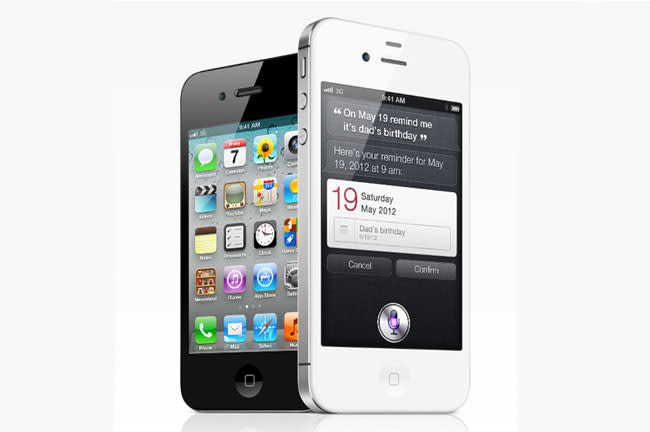
While Apple had been releasing new iPhones in the summer season, things changed with the introduction of the iPhone 4S. This was the first iPhone that Apple announced and began selling in the fall, which is a trend that Apple continues to this day. Though the iPhone 4S launched in October 2011, Apple then moved to September launches for later iPhones, with a few exceptions.
The iPhone 4S took things a step further for mobile iPhone photographers by adding an 8MP camera that would set the standard for several more years. It also added 1080p video recording, which was a big milestone. And since the higher megapixel count and 1080p videos would mean bigger file sizes, Apple also bumped the maximum storage to 64GB.
The iPhone 4S was significant because this was the first iPhone with Apple’s digital assistant, Siri (that’s what the “S” stands for in “4S”). Users could ask Siri to perform various tasks just by using their voice.
The iPhone 4S also coincided with Apple’s launch of iCloud, which is Apple’s in-house cloud storage solution. It gives everyone 5GB of storage for free, which ironically, has not changed in over a decade, despite larger file sizes from photos and video, as well as cloud backups.
The iPhone 4S also launched on Sprint, further expanding the network choices for buyers.
iPhone 5 (September 2012)
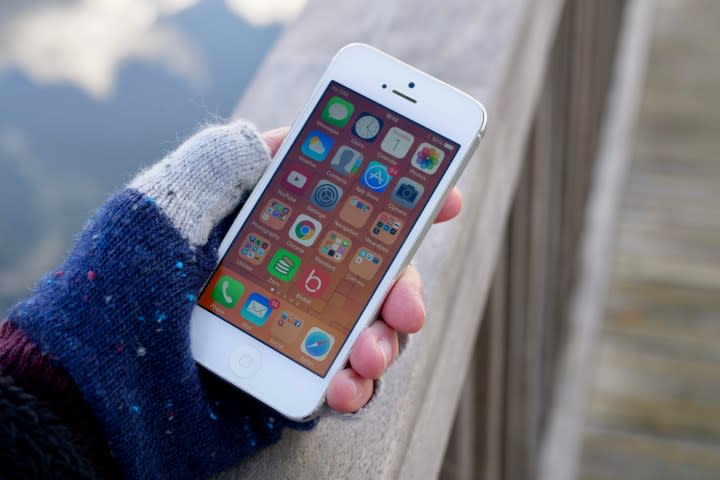
Like the iPhone 4 before it, the iPhone 5 also introduced some major changes. With the iPhone 5, we got a larger, 4-inch screen, LTE connectivity, and an HD front-facing FaceTime camera.
This was also when Apple switched from the old 30-pin charging port to the Lightning connector, which became standard for iPhones for the next 10 years.
The iPhone 5 also introduced a new aluminum design that was incredibly lightweight and comfortable to hold. This design would end up being a favorite for many fans, including myself. However, the space gray version was prone to micro scratches due to the anodized finish on the aluminum.
iPhone 5S and 5C (September 2013)
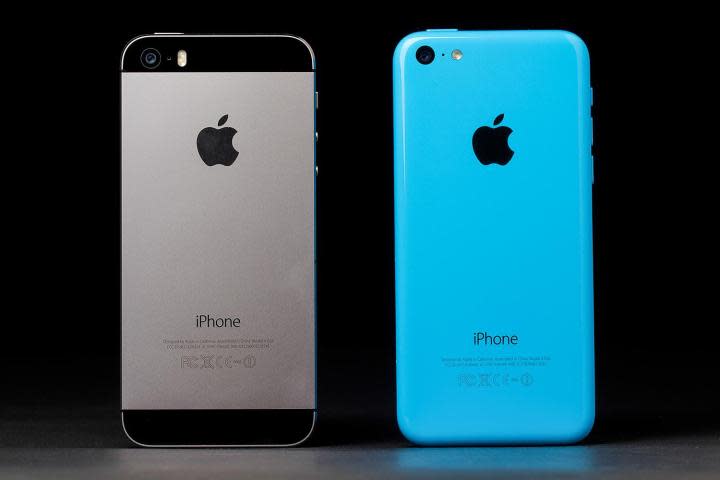
With the iPhone 5S and 5C, Apple introduced two different iPhone models at once for the first time. The iPhone 5S would be the flagship and main star of the show, while the iPhone 5C was marketed as a more budget-friendly option that made some compromises to features.
The iPhone 5S was the first iPhone with Touch ID in the Home button, which added another layer of biometric security before one could access their device. It also improved the 8MP camera and included True Tone flash, along with new camera modes for burst photos and slo-mo.
The iPhone 5C was marketed as a more affordable, budget-friendly option, so it did make some compromises. Rather than have the aluminum body like its sibling, the body for the iPhone 5C was entirely made of plastic (it was “beautifully, unapologetically plastic,” as Apple designer Jony Ive put it), and it came in bright and bold colors for the first time ever.
Apple also released a case specifically for the iPhone 5C that featured hole cutouts that allowed the iPhone 5C color to peek through the case.
The iPhone 5C did not include the Touch ID sensor in the Home button. It only had the passcode method to unlock the phone.
iPhone 6 and 6 Plus (September 2014)
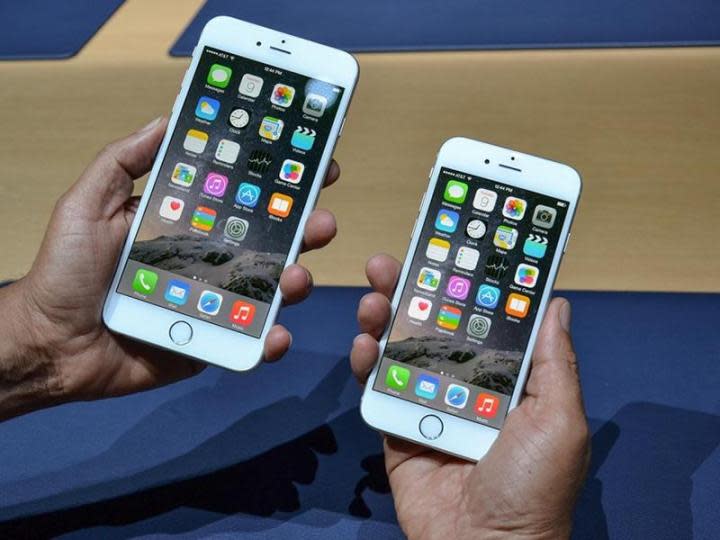
This is when Apple began to introduce two different screen sizes for the iPhone. The iPhone 6 had a 4.7-inch display, while the iPhone 6 Plus had a larger 5.5-inch display. The overall design was thinner, with a unibody aluminum body.
However, the thinner body sparked another scandal called “bendgate.” This was because some people discovered that their iPhone 6 chassis would bend if enough pressure was applied, such as when it was kept in a tight back pocket of a pair of pants.
The iPhone 6 and 6 Plus were also the first iPhones to add Apple Pay, a new contactless digital payment method that can be authenticated with the Touch ID fingerprint sensor. Storage was also increased to a max of 128GB.
iPhone 6s and 6s Plus (September 2015)
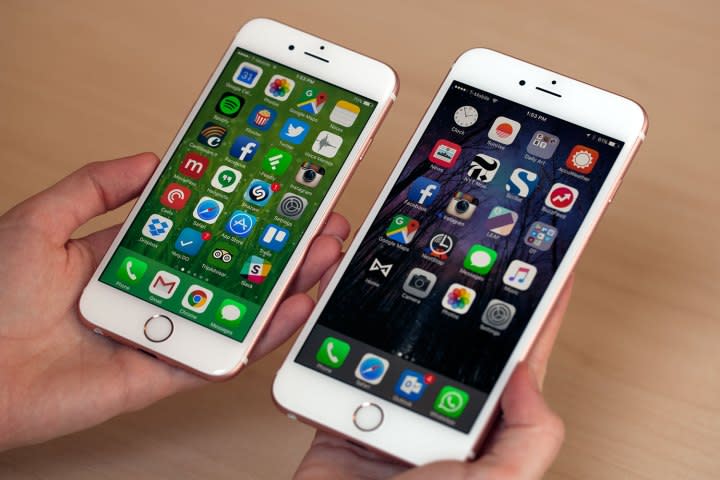
About a year later, Apple launched the iPhone 6s and 6s Plus. These two phones retained the 4.7-inch and 5.5-inch displays from its predecessor, as well as the overall look and design. But this would be the first time that it launched the Rose Gold color, which was a gorgeous metallic pink. It was a fan favorite for many people, myself included.
Apple also introduced 3D Touch with the iPhone 6s and 6s Plus. With 3D Touch, users could apply pressure on the iPhone display to bring up additional options, such as contextual menus on app icons on the home screen. It seems that 3D Touch was more of a hidden feature, however, as not everyone knew about it, and Apple eventually discontinued the feature years later with the iPhone 11.
Apple upgraded the cameras to 12MP for the first time, a bump up from the previous 8MP camera. The 12MP lens would be the standard until the iPhone 14 Pro launched in 2023.
The iPhone 6s series is also when Live Photos was introduced, which is a combination of a still image and a short video. When a person takes a Live Photo, it captures a couple of seconds before and after the moment the shutter button is pressed. A Live Photo looks like a still image, but when you activate it with a long press, it plays a few seconds of sound and motion.
The iPhone 6s and 6s Plus are also the first iPhones that allowed users to activate Siri at any time with the “Hey Siri” command instead of just when it was plugged into power.
iPhone SE (March 2016)
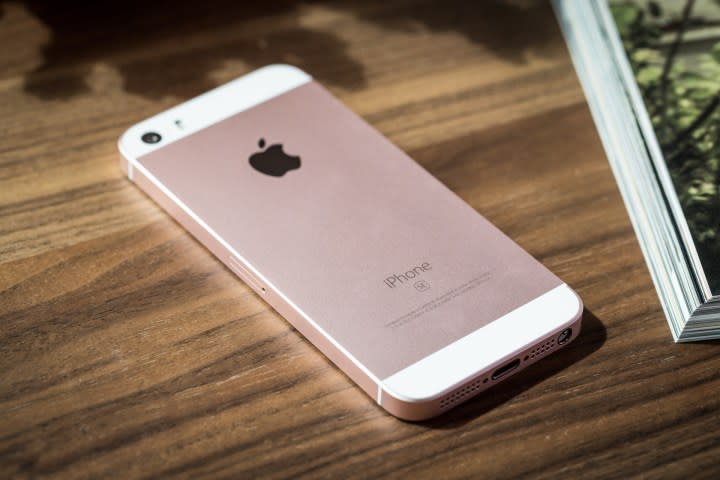
The first iPhone SE was an interesting product, and showed that Apple can make a budget-friendly option that doesn’t feel cheap, unlike the iPhone 5C. With the iPhone SE, it combined most of the features and capabilities of the current iPhone 6s lineup into the body of an iPhone 5.
The iPhone SE also defined the idea of the perfect compact iPhone for many people. The 4-inch display made it possible to use one-handed, and you got a 12MP camera, 4K video recording, Live Photos, and “Hey Siri” without needing to be plugged in. It was a great form factor that didn’t compromise on features aside from 3D Touch.
iPhone 7 and 7 Plus (September 2016)
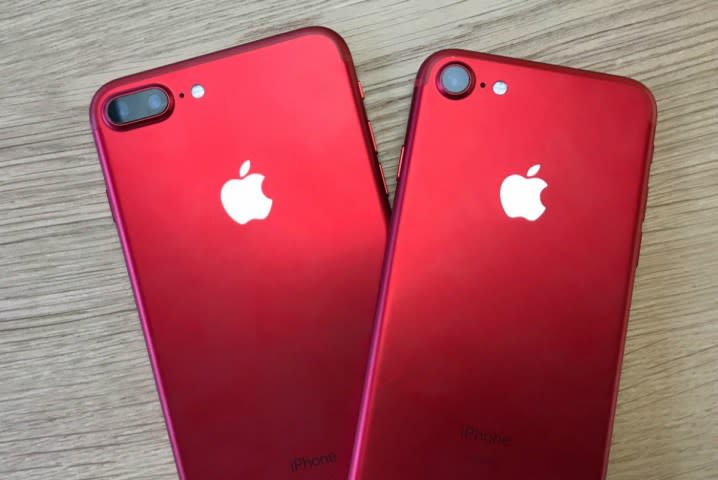
The iPhone 7 and 7 Plus marked a big turning point for the iPhone. The launch of the iPhone 7 line meant the death of the headphone jack, but also saw the first generation of AirPods debut alongside it.
But that wasn’t all. The iPhone 7 and 7 Plus introduced a sleeker design than the iPhone 6s, getting rid of those unsightly antenna strips on the rear. The iPhone 7 and 7 Plus also became the first iPhones with an IP67 water-resistance rating for better durability. Apple also introduced the beautiful and shiny Jet Black color option, which would never be seen again after the iPhone 7.
However, the star of the lineup was the iPhone 7 Plus, as it was the first iPhone to have a dual camera setup with a main camera and a telephoto lens. And thanks to the dual lens, Apple introduced Portrait mode. To keep up with the camera improvements, maximum storage was also increased to 256GB.
Again, the iPhone 7 and 7 Plus were a turning point for mobile photography by adding Portrait mode. This lets people take professional-looking portraits that replicate what you get when using a DSLR camera, but now you could do it with your iPhone. After this, Portrait mode became incredibly popular and standard on every smartphone.
iPhone 8 and 8 Plus (September 2017)
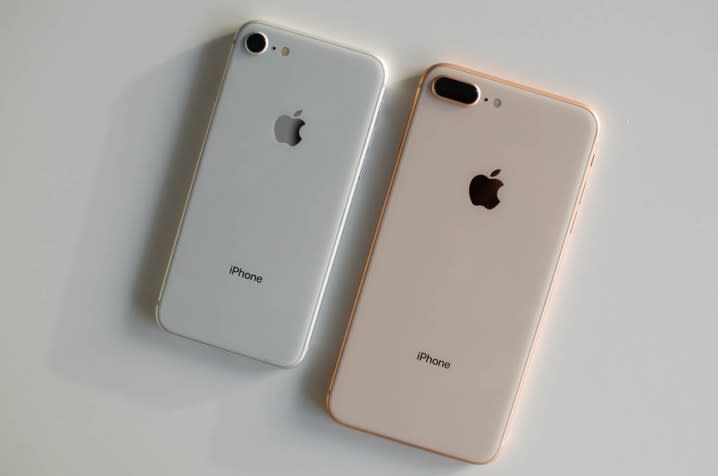
The iPhone 8 and 8 Plus were interesting devices, as they signaled the end of the Home button era for mainline iPhones. Apple brought a new glass and aluminum design, though the form factor was similar to its predecessor. This new body allowed for wireless charging for the very first time on an iPhone.
One of the bigger features that the iPhone 8 added was Portrait Lighting. This lets users change the lighting style for Portrait mode images, making them look even more professional. The iPhone 8 was also the first iPhone to support augmented reality (AR) in apps and games, which brought a whole new experience to mobile.
The iPhone 8 and 8 Plus also launched around the same time as the iPhone X, which ushered in a new era for the iPhone. However, the iPhone 8 body has been recycled for future iPhone SE models.
iPhone X (November 2017)

To signify a decade of iPhone, the iPhone X was a special edition to celebrate the occasion.
It also introduced the next era of the iPhone by removing the Home button and Touch ID sensor in favor of a new biometric form of security called Face ID. Rather than use your fingerprint to unlock your phone, all it needs to do is scan your face.
Since Apple removed the Home button, that meant the iPhone X was the first iPhone to have a 5.8-inch full-screen design, and it introduced the notch that people either loved or hated for years to come. This is also the first iPhone with an OLED Super Retina display.
The iPhone X was definitely a milestone in the history of the iPhone. For a decade, we’d been used to an iPhone with a Home button, but the iPhone X completely changed that and established a new iconic look. And we barely have Touch ID anymore except on a few select devices these days.
iPhone XS and XS Max (September 2018)
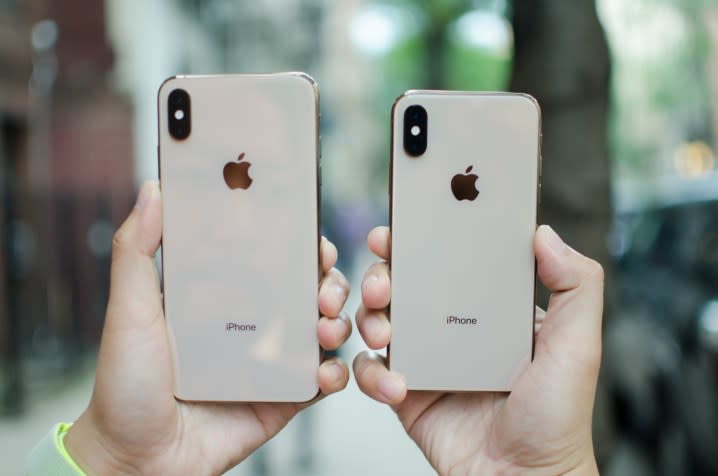
With the iPhone XS and XS Max, Apple finally eliminated the Home button from the flagship devices. Apple also brought back a larger form factor with the Max moniker, and introduced a 6.5-inch display, making the iPhone XS Max the largest iPhone yet at the time. The regular iPhone XS still retained the 5.8-inch display from its predecessor.
Other improvements with the iPhone XS and XS Max were faster Face ID, better water resistance with an IP68 rating, and dual SIM support for the first time, as it added support for eSIM alongside the physical nano SIM card slot. The iPhone XS and XS Max also could handle Gigabit LTE for even faster download speeds. And the maximum storage tier went up to 512GB.
The iPhone XS and XS Max are significant as they set the new precedent for two sizes of full-screen iPhones going forward. The XS Max is also the first “Max” iPhone.
iPhone XR (October 2018)
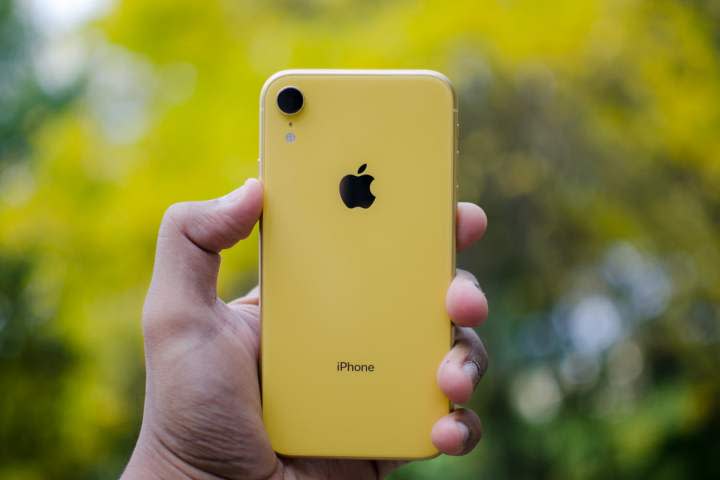
The iPhone XR was a one-off that launched with the iPhone XS and XS Max. It was designed to be a cheaper version of the XS and XS Max.
Despite the iPhone XR having a larger screen than the iPhone XS at 6.1 inches, it was only a Liquid Retina LCD display rather than OLED like the flagship models. It also only had a single rear camera, as well as a slightly lower IP67 water-resistance rating compared to the IP68 on the XS and XS Max. The iPhone XR also came in six vibrant colors, and the cheaper price point appealed to people who were on a tighter budget.
The iPhone XR didn’t do anything groundbreaking, but it was the first iPhone that had the 6.1-inch display size that has become the norm for the iPhone in the past few years. And while it wasn’t a major flagship phone, the budget-friendly price point helped boost it to be one of the most popular smartphones in 2019.
iPhone 11 series (September 2019)
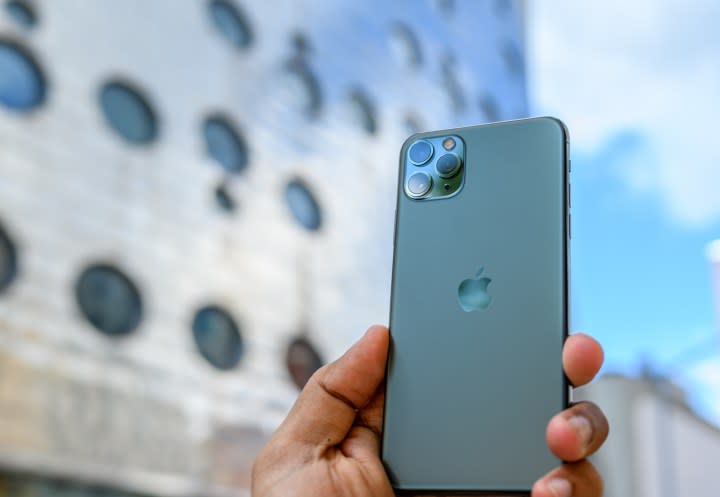
The iPhone 11 series included the iPhone 11, iPhone 11 Pro, and iPhone 11 Pro Max. This is the first time that Apple has introduced three iPhone models together at the same time ( the iPhone 8/X and iPhone XS/XR were a month apart), and it set the new standard of a standard iPhone, a Pro model, and a larger Pro Max.
This is also the first time that Apple included an ultrawide lens on all models, as well as the new U1 chip with ultra-wideband technology.
Furthermore, the iPhone 11 Pro and Pro Max were the first to have triple camera setups with a main, ultrawide, and telephoto lens. Apple also upgraded the displays to Super Retina XDR OLED displays and improved battery life.
The iPhone 11 Pro models set the stage for the next several years of iPhones to come. Though the cameras have continued to get larger over the years, even current iPhones still have that same triple-lens camera layout that debuted with the iPhone 11 Pro.
iPhone SE 2 (April 2020)
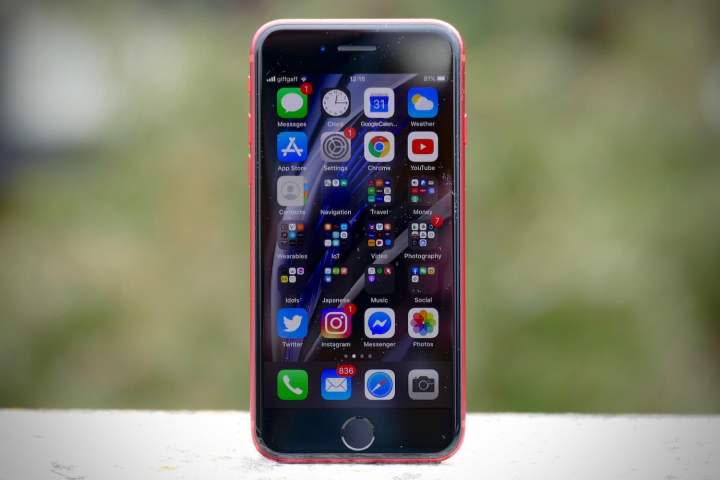
Apple surprised everyone in the middle of an iPhone life cycle by bringing back the iPhone SE, four years after the original, in the form of the iPhone SE 2. While it wasn’t as small and compact as the original, it still appealed to those who prefer small phones, and the hardware wasn’t too shabby either.
The iPhone SE 2 recycled the old chassis of the iPhone 8 while still using the A13 chip that was inside the iPhone 11 series. With the 4.7-inch screen, the iPhone SE 2 brought back the Home button and Touch ID for those who preferred it.
In 2020, the iPhone SE 2 provided an excellent value. It was the most affordable iPhone one could buy, and despite looking like the old iPhone 8, the iPhone SE 2 had more capabilities like Portrait mode with a single lens camera.
iPhone 12 series (October 2020)
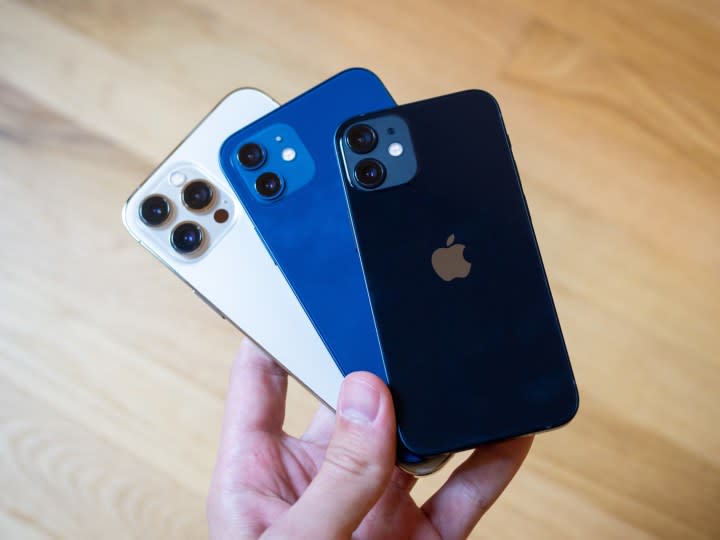
The iPhone 12 series was the first time Apple introduced four iPhones at the same time with three different sizes: the iPhone 12 mini, iPhone 12, iPhone 12 Pro, and iPhone 12 Pro Max. The iPhone 12 mini, in particular, was unique because it was the smallest and most compact iPhone that Apple offered — offering a 5.4-inch display that still had the full-screen design of the rest of the iPhone 12 lineup.
Apple equipped the iPhone 12 mini and iPhone 12 with dual rear cameras, but once again offered a triple camera system for the iPhone 12 Pro and iPhone 12 Pro Max. Apple also debuted Ceramic Shield, which is a coating on the front glass to make it more shatter-resistant. The Pro models also added lidar for better augmented reality experiences.
The entire iPhone 12 lineup was a big deal, however. These were the first iPhones to have 5G support, and introduced Apple’s proprietary MagSafe magnetic wireless charging and accessory ecosystem. With 2G/EDGE networks already put to pasture by most carriers and 3G soon to followit into obscurity, having 5G support was crucial, as it coexists with 4G/LTE and will be around for a long time. MagSafe also opened up a whole new world of creative accessories and is also a major influence on the new Qi2 wireless charging standard.
But the iPhone 12 series also removed the in-box charger. Apple began only providing the charging cable, so people would have to either use their previous charger or buy a new one. Other brands mostly followed suit.
iPhone 13 series (September 2021)
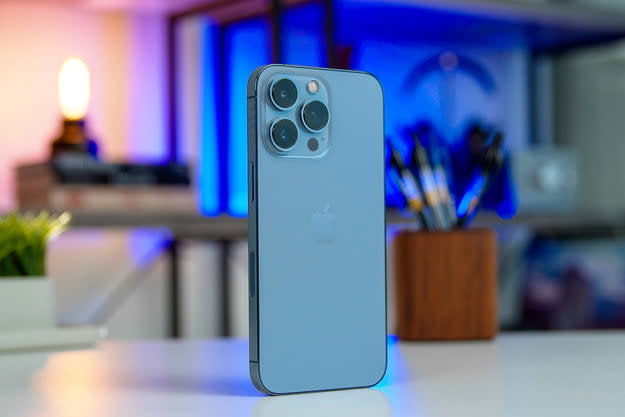
For the most part, the iPhone 13 line was very similar to the iPhone 12 before it. We got four models: the iPhone 13 mini, iPhone 13, iPhone 13 Pro, and iPhone 13 Pro Max. The biggest differences were the new colors and a smaller notch.
But the iPhone 13 lineup did bring some other notable changes, including the A15 Bionic chip that gave a big boost to overall battery life. Cinematic video mode also launched with the iPhone 13 line, giving videos a depth effect that changed focus automatically, depending on what was going on in the scene.
The iPhone 13 Pro and iPhone 13 Pro Max were also the first iPhones to get the 120Hz ProMotion display, which set the standard for future Pro models to come. With the higher adaptive refresh rate, scrolling and animations are smoother than ever. Though it’s not as drastic of a change as when Apple introduced the Retina display on the iPhone 4, it is still noticeable when you compare the iPhone 13 and iPhone 13 Pro side by side.
The iPhone 13 Pro was also the first iPhone to go up to 1TB in storage capacity.
iPhone SE 3 (March 2022)
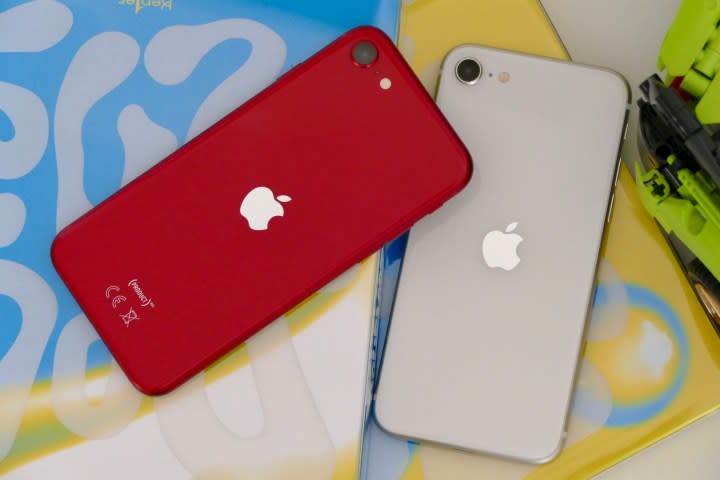
Apple delivered an iPhone SE 3 in 2022, but it was less impressive than when the second generation of the device launched. It still had the iPhone 8 body with a 4.7-inch display and the Home button with Touch ID.
However, this time around, Apple stuffed it with the A15 Bionic chip, which was the same as the iPhone 13 line. It also added 5G connectivity support, which means it should be future-proof for a good while. Battery life was also a bit better than before.
Otherwise, not much else changed. It’s unclear if there will be an iPhone SE 4, but we hope to see an updated design — the iPhone 8 body is very outdated these days.
iPhone 14 Series (September 2022)
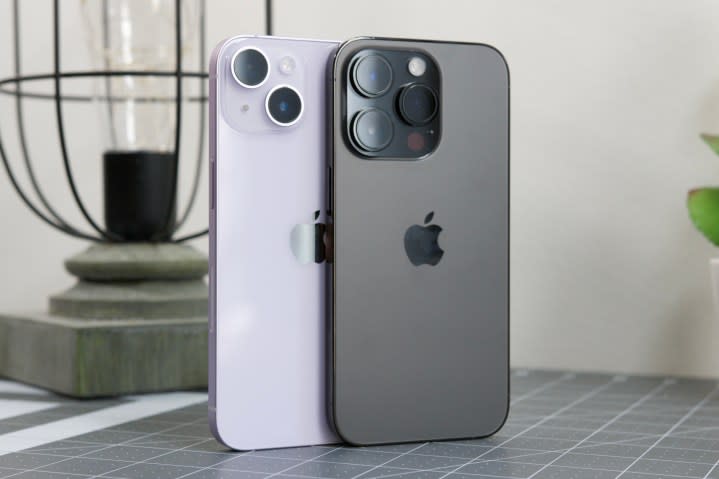
Though the iPhone 14 series continued the tradition of four iPhone models, Apple eliminated the mini from the lineup and replaced it with the new Plus offering, which is the same size as the Pro Max. The reasoning for getting rid of the mini was due to poor sales performance, and Apple believed more people would be interested in a Plus model over a mini.
For the most part, the standard iPhone 14 and iPhone 14 Plus brought over features from the iPhone 13, including the A15 Bionic. But the biggest upgrades came in the iPhone 14 Pro and iPhone 14 Pro Max with the Dynamic Island, which replaced the notch that debuted with the iPhone X, and a bump to the cameras to 48MP from 12MP. This was also the first iPhone with an always-on display.
The entire iPhone 14 line also got the new Crash Detection and Emergency SOS via Satellite features aimed at saving lives. The iPhone 14 series is also the first iPhone in the U.S. to eliminate physical SIM card trays and switch exclusively to eSIM.
While the standard iPhone 14 and iPhone 14 Plus were iterative upgrades, the iPhone 14 Pro and Pro Max would play a major part in influencing the future direction of the iPhone. The Dynamic Island would eventually make its way to all iPhone models, getting rid of the ugly notch, and the 48MP would become the new baseline.
iPhone 15 Series (September 2023)
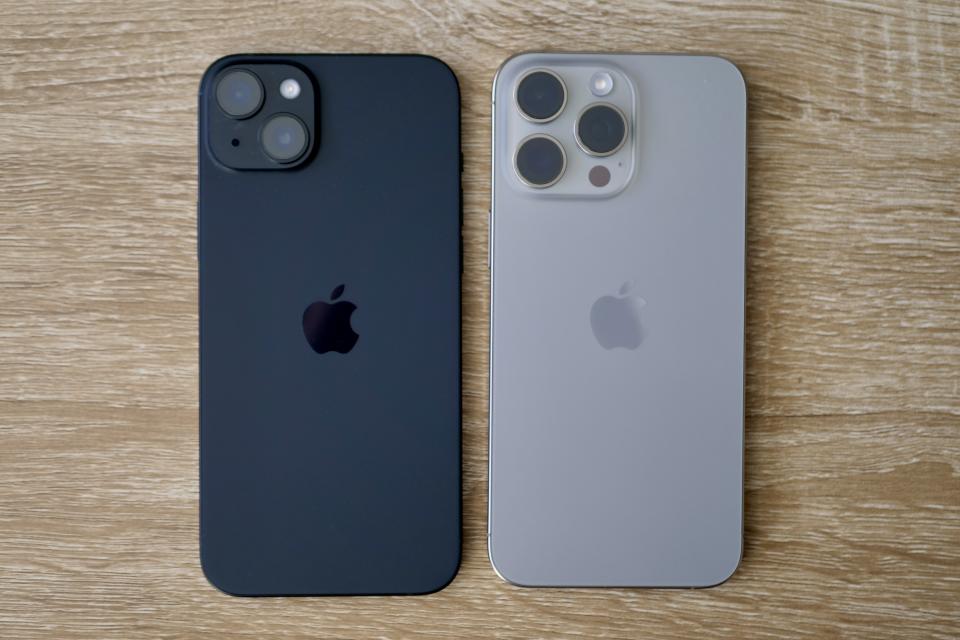
The iPhone 15 line has brought some of the biggest changes in the history of the iPhone yet. The base model iPhone 15 and iPhone 15 Plus both get a big camera boost to 48MP, like the iPhone 14 Pro did last year, and they dumped the notch for the Dynamic Island.
The iPhone 15 Pro and iPhone 15 Pro Max got even bigger upgrades with the new titanium frame instead of stainless steel, the A17 Pro chip, and the new 5x telephoto lens on the Pro Max. Apple also got rid of the classic silent/ring toggle and replaced it with a new Action button, similar to that found on the Apple Watch Ultra, which users can map to different functions as they see fit.
But the biggest change, and the one that the entire iPhone 15 lineup will probably be remembered for, is the fact that it replaced the proprietary Lightning charging port with USB-C. Lightning had been around since the iPhone 5 in 2012, so the cable that everyone had been using for the past decade was finally dead.
Apple dropping its own proprietary charger, which it made a lot of money from licensing out, for a more universal option is a very big deal. Plus, it opened up a whole new world of USB-C accessories that were previously incompatible.
And there’s no doubt that the switch to titanium will have an impact on future iPhones and even the competition. Other brands have already begun to copy the titanium design, such as the OnePlus Open and even the Samsung Galaxy S24 Ultra.

